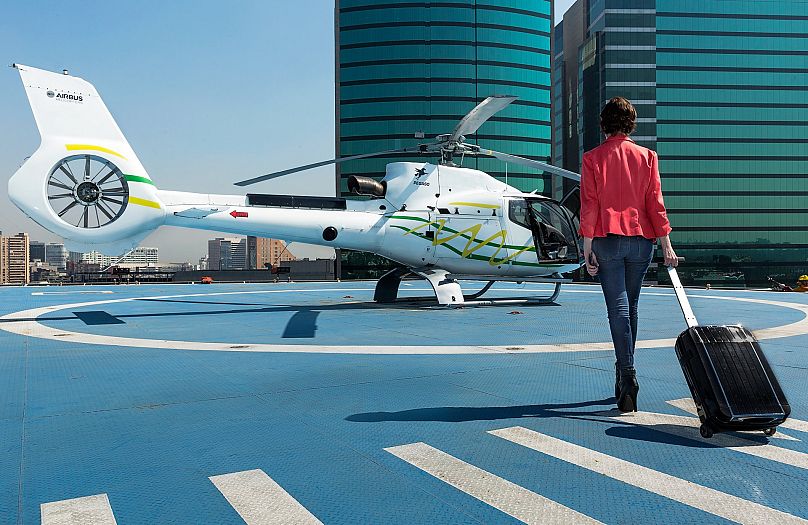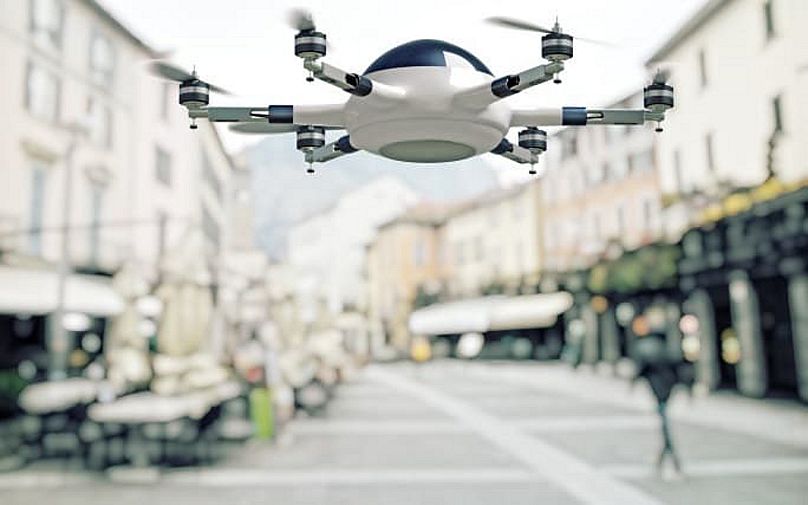In the sustainable megalopolis of tomorrow, flying cars will lift off from busy streets to swiftly and safely navigate the skies alongside self-piloted electric air taxis and parcel delivery drones.
Far from being a scene from Total Recall or some other science fiction movie, this aerial cityscape is set to become our reality in the not too distant future.
In the meantime, metro areas are becoming denser, more trafficked and polluted. By 2050, about 2.5 billion more people will be living in cities.
While congestion is already pushing metropolises — from Los Angeles to London — to their limits, the skies have been largely under-utilised. Airbus and other forward-looking firms see an opportunity.
The aerospace giant is heading its skyward charge through cutting-edge concept and demonstration vehicles and projects that will change urban air mobility forever.
Safe, effective, fluid integration with soft and hard infrastructure is crucial to making this happen.
Hail-a-Copter
This future starts now, by maximising current flight infrastructure — an approach taken by premier on-demand helicopter booking platform Voom. A wholly-owned subsidiary of Airbus Helicopters, it was born in A³ — the European company’s Silicon Valley innovation outpost.
Voom launched commercial operations in 2017 in São Paulo, followed by Mexico City. This was by design. Both locales are notorious for heavy ground traffic (Mexico City was recently dubbed home to the world’s worst congestion). Importantly, there are more than 400 helipads in São Paulo; over 200 in the Mexican capital.
Voom’s prices are up to 80 percent lower than those of a standard helicopter service. Costs could be further reduced when its unmanned electric choppers become available.
Customers simply click and order a copter on Voom’s mobile site, one hour to one week in advance. Fifteen minutes after arriving at the nearest designated helipad and they’re whisked away— in some cases flying into their destination in 12 minutes, instead of sitting in three-hour peak gridlock.
The efficient, reliable, cost-effective service has been called ‘the Uber of helicopters.’
Perhaps no coincidence, as a 2016 on-demand chopper collaboration between Airbus and the San Francisco tech and transport business, was a precursor to Voom.
Fantastic Flying Machines
Sci-fi fans have dreamed of a time when commuters would traverse the skies in flying cars. These multimodal vehicles — which can cruise urban thoroughfares and then be retooled for vertical take-off and flight — have seen some exciting real-world advances.
Airbus and its partner Italdesign showcased Pop.Up, their self-piloted multimodal transport concept, at last year’s Geneva International Motor Show. The well-received modular flying car is primed to skirt city traffic, as its capsule unlatches from a ground module — transforming it into a metro aircraft.
The term ‘flying car’ is also loosely used to describe some electric vertical take-off and landing (eVTOL) vehicles; quieter and cleaner, they could some day be used as regularly as today’s personal automobiles. This innovation space, particularly in one- to four-seaters, has been buzzing.
Germany’s Volocopter has signed an agreement with the Roads and Transport Authority (RTA) in Dubai to test the two-seat, 18-rotor electric Autonomous Air Taxi. Working with the Dubai Civil Aviation authority, RTA will co-develop the necessary operational and legislative guidelines.
Aerospace heavyweights are also surging ahead with eVTOLs. A³’s autonomous single-passenger (or cargo) Vahana prototype had its first full-scale test flight in January — inching closer to obtaining its own unique aviation authority classification. Fitted with detect and avoid technology, it also features a deployable ballistic parachute, which functions at low altitudes.
Meanwhile, Airbus Helicopters is pressing on with the four-seat self-piloted CityAirbus demonstrator, which underscores cost-efficiency and a low environmental footprint.
Both programmes aim to improve air safety by reducing human error through full automation (once regulations are in place).
The flurry of activity around eVTOLs calls for new hard infrastructure to support urban adoption. New York’s Blade is laying the foundations for tomorrow’s take-off and landing areas (or ‘vertiports’). The aviation startup has raised funds from Airbus Helicopters, global real estate investment firm Colony Northstar and others, to aid in such development.
Air Taxi Hubs
• eVTOL infrastructure may end up being cost-beneficial and space-saving as the aircraft don’t rely on runways, railways, bridges or tunnels
• Networks of take-off and landing zones – ‘vertiports’ – will be needed as well as on-site electrical charging stations
• Existing helipads and rooftop levels of parking garages can be adaptively re-used for such purposes
Blueprints for the Sky
It’s 2030. A big sporting event in Berlin triggers flight restrictions which only permit media drones overhead. Other aircraft are redirected to their destinations, while emergency vehicles are given priority access. When the games end, normal air traffic seamlessly resumes.
A³’s Altiscope project can bring such scenarios to life as ‘blueprints for the sky’ — helping shape
next generation infrastructure, air traffic control systems and regulations.
It will provide policymakers, manufacturers, operators and service providers with the tools they need to ensure safe and orderly integration of eVTOL and other visionary vehicles in the ever-complex urban skyline.
Altiscope will be able to explore, for example, how unmanned aerial systems may be used for medical aid transport in rural areas.
The project is enabling such solutions through decision modelling, data-driven policy simulation and deep analysis, assessing risks and blazing a trail towards new industry standards.
Robot-Loaded, Drone-Delivered
Tech-powered package shipping could give new meaning to the age-old term ‘air mail.’
Behemoths like Alphabet/Google and Amazon have been active in developing delivery drones and are, along with others, supporting a privately-run and funded air traffic control network, distinct from the federal order.
Airbus Helicopters is experimenting with unmanned drone delivery and its related logistics and infrastructure in South East Asia — teaming up with the Civil Aviation Authority of Singapore (CAAS) on the roll-out of the Skyways project.
Currently trialing with staff and students at the National University of Singapore campus, the drones depart from a maintenance centre, averting collisions by flying along aerial corridors. They land on a custom-designed parcel station roof.
There, a robot arm loads them up with small two to four kilogram packages. The drones fly the parcels to a storage locker hub, where they are collected by recipients.
Airbus and CAAS are also supporting secure and reliable air delivery in cities by joining forces with the European Aviation Safety Agency. Under a recently signed agreement, the three parties will help develop safety standards and regulatory requirements for urban unmanned aircraft systems.
Ultimately, all the companies, organisations, governments and regulators furthering urban air mobility innovations, are collectively contributing to an unprecedented aviation infrastructure and regulatory framework for what may well end up being the most impactful industry of the 21st century.
Uncover the latest in urban air mobility by visiting Airbus





